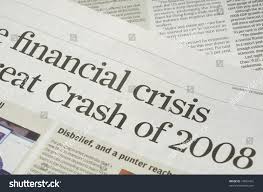Gold as a safe haven proved its worth during the 2008 Global Financial Crisis, when the collapse of major financial institutions triggered panic across global markets. Amid widespread uncertainty and the failure of traditional investments, gold emerged as a trusted asset for preserving wealth. Its intrinsic value and independence from the financial system made it a reliable refuge for investors seeking stability. The crisis underscored gold’s enduring role as a hedge against systemic risks, cementing its status as an essential component of resilient investment strategies.

The Collapse of Major Financial Institutions
- Lehman Brothers Bankruptcy:
- In September 2008, Lehman Brothers, one of the largest investment banks in the U.S., filed for bankruptcy, triggering panic across financial markets.
- The collapse highlighted the fragility of the global financial system, leading investors to seek refuge in gold.
- Banking System Instability:
- The crisis exposed vulnerabilities in other major financial institutions, including Bear Stearns and AIG, further eroding market confidence.
- Widespread bailouts and liquidity injections failed to fully calm fears, driving demand for gold as a store of value.
Gold’s Performance During the Crisis
- Initial Price Dip, Then Surge:
- Gold prices initially dipped as investors sold assets, including gold, to cover losses and meet margin calls.
- However, as central banks intervened with unprecedented stimulus measures, gold prices rebounded sharply, climbing from around $800 per ounce in late 2008 to over $1,200 by the end of 2009.
- Safe-Haven Demand:
- Investors turned to gold as a hedge against systemic risks, currency devaluation, and potential inflation from quantitative easing policies.
- Gold ETFs saw record inflows, reflecting heightened interest from both retail and institutional investors.
Why Gold Thrived as a Safe Haven
- Trust and Tangibility:
- Unlike fiat currencies, which were subject to central bank policies, gold offered intrinsic value and independence from the financial system.
- Inflation Concerns:
- Fears of future inflation due to large-scale monetary stimulus bolstered gold’s appeal as a hedge against devaluation.
Gold’s Role in Diversified Portfolios
- Stabilizing Returns:
- Gold’s uncorrelated performance relative to equities and bonds during the crisis underscored its importance in reducing portfolio risk.
- Renewed Interest in Gold:
- The crisis reignited interest in gold, with central banks and investors increasing allocations to the asset in subsequent years.
The Legacy of Gold in the 2008 Crisis
- A Benchmark for Future Crises:
- The 2008 crisis cemented gold’s reputation as the ultimate safe-haven asset, setting a precedent for its role during future economic shocks.
- The Beginning of a Bull Market:
- Gold’s performance during the crisis sparked a long bull market, with prices continuing to rise to new highs in the following decade.
The 2008 Global Financial Crisis demonstrated gold’s unparalleled ability to weather economic turmoil and protect wealth. As financial markets collapsed, gold remained a beacon of stability, reaffirming its role as an essential component of a resilient investment strategy.
